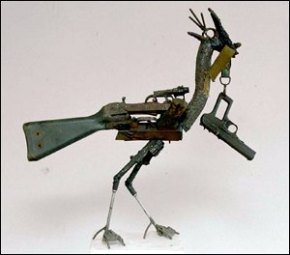Banksy
is a street artist whose identity is unknown all over the world. He is known to
be Robert Banks or Robin Gunningham. He began his career as a graffiti artist
in the early `90s. His signature style was developed while his work became more
popular around Bristol and London. Banksy’s artwork is known to be striking
images with slogans and dark humor. He engages political themes, critiquing
war, capitalism, and greed. Banksy’s artwork has transformed around the world
from being vandalism to interesting pieces of high quality of art.
In 2007, Banksy famous created a stenciled
imaged on the security wall of West Bank in Bethlehem. The wall is known to be
a barrier and has many names such as “apartheid wall” and “Anti-terrorist
fence” that separates Israel and Palestine.
There were many conflicts with Israeli soldiers that the Palestinian
villagers went to court and won the case. The fence was moved closer Israel and
then it was rebuilt as a wall. This wall is known to have artwork all over it
where it promotes upcoming events in the area, but Banksy’s artwork was what
shocked people the most. Banksy chose this wall because it was the birthplace
of Jesus and it was the center of allegations of human rights abuses. The wall
art of ‘Girl and a Soldier’ represents the controversial idea of children being
persecuted. The image shows a girl wearing ponytails and a pink dress
representing purity and innocence. The soldier is in the traditional soldier
clothing with a machine gun lying on his side to contrast with the young girl
signifying violence. The girl patting
down the soldier displays dehumanization of individuals as they are
automatically assumed to be aggressive based on their religion or ethnicity. The
image demonstrates the limited freedom that Palestine people have with role
reversal. It also demonstrates the limited freedom that Palestine people have
with role reversal. Banksy’s goal of this artwork is to have observers to
contemplate the cultural barriers that avoid others from completely recognizing
the true humanity of others. Banksy’s artwork influences society because he
sends out the message through his artwork of human rights.
His
artwork impacted me personally because it made me realize how artwork can
describe so much meaning. An image can hold so much content and can change
people’s perspectives of the world. When looking at Banksy’s artwork I realized
the world is not a safe place and that there are always controversies between
one another, between countries, or between certain groups of people.



